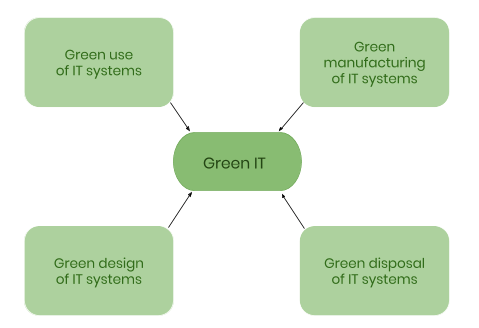What Is Blockchain Technology? How It Works and Why It Matters For Your Business
Amanda Gonsalves | Jun 18, 2025

Questions involving sustainability are becoming more and more recurrent, however, the evolving of technology has created a massive wave of exaggerated consumerism marked by waste of IT components that can be harmful to the environment. In the end, it drove a competition between companies and stimulated the development of new green technologies. This is the scenario where the Green IT concept popped out.
Created by technology companies, Green IT has the purpose of combining available resources with sustainability politics and economic performance within the organizations, seeking to generate benefits to the environment and to the companies as well. So, Green IT is all about reducing waste and increasing the efficiency of the processes and events related to computer’s operations.
To understand the environmental impacts of IT, it is necessary to adopt a holistic approach that addresses the problems along the following four complementary paths:

Some of its environment and financial benefits are: reduction of gas emissions, optimization of activities, gathering insights of reutilization and recycling in the operations, help in conserving energy and also aid in the reduction of losses, decreasing operational expenses.
To add to the Green IT concept, there’s also the Triple Bottom Line concept. Suitable to any company, it consists in how enterprises conduct their business in a profitable way, generating benefits to the people involved in it and the society, causing as little harm and impact as possible to the environment, as shown in the picture below.
i
After all this theoretical discussion, what about putting it to work? Here are some practices that your IT company can do to make our environment a better place:
Better functioning of Softwares: Making computer programs more efficient, consuming less energy, optimizing its processing and disabling functions or devices when they’re not being used. Also, managing the energy consumption according to the equipment usage.
When buying new equipments: It’s important to elaborate a clear company policy about the acquisition of equipments that have less consumption of energy and, if possible, to buy one that uses recycled and non-polluting materials.
Computers, Printing machines: When possible, opt for devices with more efficient computational processes. To the printers, it is always a good call to reduce printings, doing it only when necessary, preferably using recycled paper, and also remanufacturing the cartridges.
Modernization of Datacenters: Using virtualized, smaller data centers and with a better refrigeration, that don’t only save energy, but also reduce the need of a bigger infrastructure in order to deal with the growing demand of more energy.
Recycling Devices: Some equipments may not attend to a certain profile of use anymore, but they can be useful to other people or institutions who seek to stimulate the digital inclusion. In case the device is no longer functioning, it should be sent to recycling to reuse the materials.


